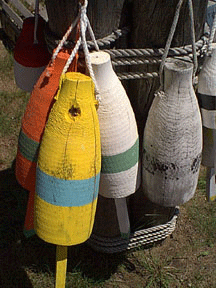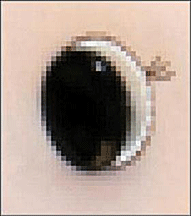
ALL
ABOUT RESOLUTION
 The
size of a photograph is specified in one of two ways—by its dimensions
in pixels or by the total number of pixels it contains. For example, the
same image can be said to have a resolution of 3648 by 2736 pixels or to
contain 10.0 million pixels (3748 multiplied by 2736).
The
size of a photograph is specified in one of two ways—by its dimensions
in pixels or by the total number of pixels it contains. For example, the
same image can be said to have a resolution of 3648 by 2736 pixels or to
contain 10.0 million pixels (3748 multiplied by 2736).
Camera Resolutions
Digital photographs are made up of millions of tiny squares called
picture elements, or just pixels. Each of these pixels is captured by a
single photosite on the camera’s image
sensor when you take the photo.
 In
short, the resolution of a digital camera refers to the sharpness of its
pictures. CCD image sensors contain a grid of photosites—each
representing one pixel in the final image. The sensor's resolution is
determined by how many photosites there are on its surface. This
resolution is usually specified in one of two ways—by the sensor's
dimension in pixels or by its total number of pixels. For example, the
same camera may specify its resolution as 3648 by 2736 pixels or 10.0
million pixels.
In
short, the resolution of a digital camera refers to the sharpness of its
pictures. CCD image sensors contain a grid of photosites—each
representing one pixel in the final image. The sensor's resolution is
determined by how many photosites there are on its surface. This
resolution is usually specified in one of two ways—by the sensor's
dimension in pixels or by its total number of pixels. For example, the
same camera may specify its resolution as 3648 by 2736 pixels or 10.0
million pixels.
Resolution can affect the image in three ways:
Pixel dimensions
- indicate image size 3748 x
2736 pixels or 10
megapixels
File size – the larger the image
dimensions, the larger the file size
Print size – the larger the stated
print size (4x6 in.), the larger the file size
and is referred to as
dots per inch or
dpi―the
more dots per inch (300dpi), the larger the file size
 The
size of the individual photosites on the sensor’s surface determines how
high a camera’s ISO numbers go. Larger photosites allow a camera’s ISO
to reach 1600 to 6400.
The
size of the individual photosites on the sensor’s surface determines how
high a camera’s ISO numbers go. Larger photosites allow a camera’s ISO
to reach 1600 to 6400.
Like the Impressionists who painted wonderful scenes with small dabs of
paint, your computer uses tiny pixels to
display or print photographs. To do so, the computer divides the screen
or printed page into a grid of pixels, much
like the image sensor is divided. Each pixel is a small square made up
of a single color. The more pixels add detail and sharpen edges. But if
you enlarge a digital image, the pixels separate into what’s called
pixelation.
Size Isn't Everything
The size of a photograph is specified in one of two ways—by its
dimensions in pixels and by the total number of pixels it contains. The
larger an image's size in pixels, the larger the image file needed to
store it. For this reason, some cameras allow you to specify more than
one size when you take a picture. This is usually indicated by
stars–one, two, three, or four. Although you are likely to get better
results with a higher number of stars or larger image, it isn't always
needed—especially when the image is going to be displayed on the Web or
printed very small. In these cases smaller images will suffice and
because they have smaller file sizes, you'll be able to squeeze more
into the camera's memory. In addition, most digital cameras allow you to
switch from one size image to another during the same photo session.
Although more photosites often means better images, adding more isn't
easy and creates other problems. It adds significantly more photosites
to the chip so the chip must be larger and each photosite smaller.
Larger chips with more photosites increase difficulties and costs of
manufacturing. Smaller photosites must be more sensitive to capture the
same amount of light. More photosites create larger image files,
creating storage problems.
Today, there are three sizes of sensors—small, medium, and large (full
frame). The largest sensor contains the largest photosites.

